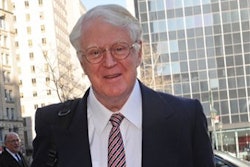As Reuters reported last week, Chinese authorities from five separate government bodies are set to mandate new fuel economy standards on all vehicles in the next few years. The policy establishes two benchmarks for emissions. One requires average fuel consumption for automakers to drop to 6.9 liters per 100 kilometers, or around 34 miles per gallon (mpg), by 2015. The second benchmark requires a much more ambitious 5.0 liters per 100 kilometers, or approximately 47 mpg, by 2020.
In comparison, President Obama instilled a similar policy for the US in August 2012, requiring average fuel consumption to meet or exceed 36.6 mpg by 2017 and 54.5 mpg by 2025.
Undoubtedly, the task will be a challenge for many Chinese vehicle manufacturers, whose average passenger car used around 7.8 liters per 100 kilometers in 2009. Yale Zhang, head of Automotive Insight, a Chinese-based industry consultant concurs, “[New standards are] going to be tough for everyone, especially those small players as they will have to use fuel-efficient engines and invest in hybrid technologies.”
Treehugger makes a good point in that this may be one of many new environmental regulations from China in the years ahead, seeing as how environmental concerns were determined to be the number one cause of social unrest in China. One key factor is the prevalence of smog in several Chinese cities, resulting in various airport cancellations, widespread respiratory illnesses, and even action from Japan to warn and prepare its citizens of the pollutants making their way across Chinese shores on a given day.
In January, USA Today noted smog readings in Beijing that were 20 times worse than levels set by the World Health Organization in terms of PM2.5, or small particulates in the air that are deemed hazardous.
The Chinese government, including Chinese Premier Li Keqiang, is fully aware of the escalating concerns. Keqiang assured the public last week that his government would show even greater resolve in tackling China’s pollution crisis. These efforts are undoubtedly a step in the right direction for the world’s most populated country.
Kristopher Settle
Energy Curtailment Specialists
For more energy-related articles from Kris, he can be found on Twitter and Google+.






















